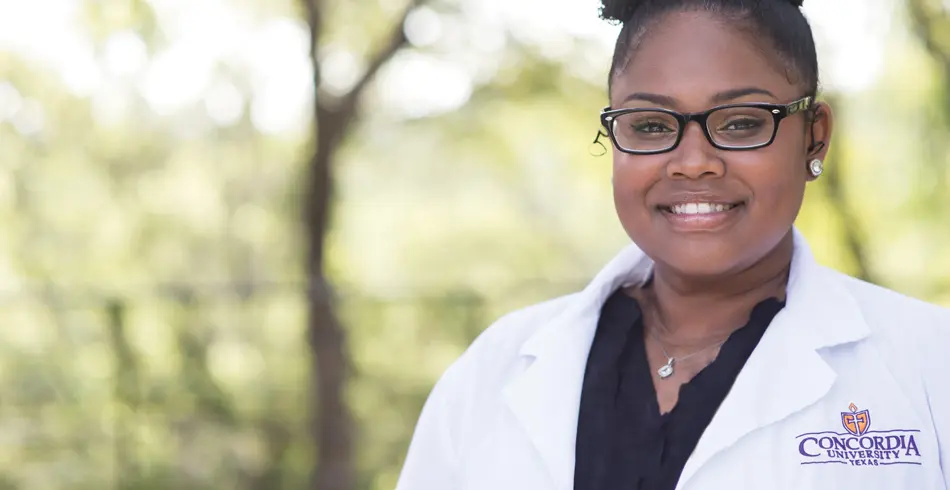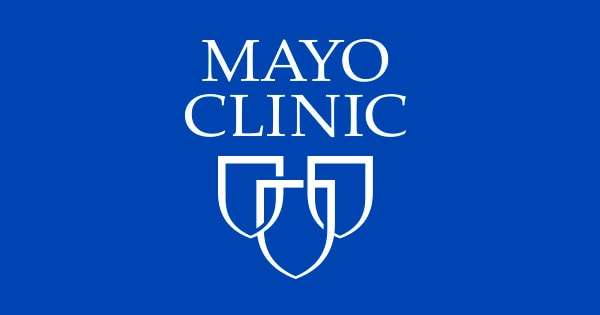What is Therapy?
Therapy provides a safe and confidential place for a person to talk to a professional about personal experiences, thoughts, feelings, or problems. People who go to therapy may have experienced a situation that that disrupts and/or impacts his or her thinking, mood, feelings, or ability to relate to others. A person may also seek out therapy because they want a neutral and safe place to talk about general life experiences. Many people seek out therapy: adults, youth, teens, even therapists themselves. Everyone needs somewhere they feel safe and supported.
The role of the therapist is to help the person understand his/her situation, teach strategies to express him/herself, and cope with potentially stressful situations. The therapist can also offer the individual or family tools to help them manage difficult feelings, and/or negative thoughts and behaviors.
Trauma Therapy & PTSD Treatment for Children
Your child went through something traumatic and is showing signs of Post Traumatic Stress Disorder (PTSD). You’re thinking about counseling. However, you aren’t sure what to expect. Can trauma therapy really help your child or your family?
Starting Trauma Therapy can be scary…for your child and for you as well
You may be nervous about starting trauma therapy for your child. After all, this probably isn’t something you’ve been through before. You may have about a thousand questions. Will you know what’s going on in counseling sessions? Is there a difference between your child talking to you versus a therapist?
All your questions are normal. It’s also common to feel about a thousand emotions when you’re bringing your child in for trauma therapy. I want to help you understand a little bit of what to expect.
Children & Resiliency
The first thing I want you to understand is that children are resilient. Resilience refers to the emotional capacity to handle adversity. What I mean is, children have an amazing ability to handle even the most stressful things! Most children who go through something terrible come out doing pretty well.
What can I do to help my child be more resilient?
The good news is that you, as a parent, can help your child learn to get through stressful situations better. As a parent, you can help build your child’s resilience by:
-
Building your own resilience.
-
Helping create a positive attachment with you and other caregivers.
-
Helping your child build social connections and nurture relationships.
-
Making sure their basic needs are met.
-
Modeling, teach and help build your child’s social and emotional skills.
-
Finding an experienced trauma therapist to work with your child.
Trauma Therapy & PTSD Treatment for Children
When your child has been through something really stressful and develops PTSD, trauma therapy can help. It’s important to find a therapist who works well with children and who also understands trauma. You want someone both you and your child can learn to trust and who can guide both of you through this process.
Trauma Focused-Cognitive Behavioral Therapy (TF-CBT): An effective trauma therapy for kids
The most common evidence-based treatment for children (3-18) who have experienced trauma is Trauma Focused-Cognitive Behavioral Therapy (TF-CBT). Some parents worry that trauma therapy will last years. However, TF-CBT is a relatively brief (typically 12-20 sessions) trauma therapy. The therapist will use counseling techniques based on cognitive, behavioral, family therapy, and humanistic principles.
Goals of TF-CBT
TF-CBT helps your child find healing after a stressful or traumatic event. More specifically, the goals of TF-CBT are to enable children and youth who have experienced serious traumatic events, and their supportive caregivers:
1) To learn effective skills to cope with trauma-related emotional and behavioral problems.
2) To face and resolve those problems in a safe and therapeutic way.
3) To effectively integrate their trauma experiences and help them move on with their lives in a safe and positive manner.
Parent or Caregivers are Involved in TF-CBT
One unique feature of TF-CBT is the involvement of a parent or trusted caregiver. Trauma teaches children that the world is unsafe and adults cannot be trusted to keep them safe. Thus, they often stop trusting their parents leading to the parents’ feeling confused and upset. Trauma therapy helps parents react appropriately to their children’s trauma responses while setting appropriate behavioral limits. This helps the parents be able to teach or re-teach the child that people can be safe and trustworthy.
During each session the non-offending parent/caregiver and the child will meet with me independently discussing the same component. This allows parents and children to express their personal thoughts and feelings about the child’s trauma experiences, gain skills to help the child re-regulate trauma responses and master avoidance of trauma reminders and memories.
I don’t necessarily tell the parent all the content of the session. But, I will share the skills the child is learning. For example, when discussing relaxation, I will share the relaxation skills the child is learning. We may even have the child show the parent what skills they have learned. Although conjoint parents sessions are held toward the end of treatment, I may ask a parent to join a child’s session earlier when beneficial to the child.
Phases of TF-CBT
TF-CBT is a structured trauma therapy that follows specific phases. The three phases of treatment are stabilization, trauma narration and processing, and integration and consolidation. There are very specific components of TF-CBT that your child will move through. These are summarized by the acronym “PRACTICE.” Each letter stands for a specific component of TF-CBT. The components are Psychoeducation and Parenting skills, Relaxation, Affective expression and regulation, Cognitive coping, Trauma narrative and processing, In vivo exposure, Conjoint child-parent sessions and Enhancing future safety and development. The therapist guides the child and caregiver through each phase spending as much time on each component as needed.
Psychoeducation
One of the goals of psychoeducation is to normalize the exposure to trauma. This usually begins in the first session. Often individuals who have undergone traumatic events feel very alone. At the beginning of treatment, I give examples of typical trauma responses. For example, it is very common for trauma survivors to experience flashbacks, have nightmares, startle easily and lose interest in activities. I also educate the parent and child on the type of trauma the child has endured. We may play a game where I quiz the child on facts/myths about the trauma. In this section I also educate the parent and child about how TF-CBT works. I describe each step and briefly explain what the child and parent can expect in therapy.
Parenting Skills
Childhood Trauma in Adults
The SAMHSA’s National Child Traumatic Stress Initiative (NCSTI) reports that by the age of 16, two-thirds of children report experiencing at least one traumatic event. According to the American Psychological Association, “A traumatic event is one that threatens injury, death, or the physical integrity of self or others and also causes horror, terror, or helplessness at the time it occurs.”
This can encompass many different situations and may be different for each person that comes in contact with that event.
Learn More About Our Trauma Treatment Center

Symptoms of Childhood Trauma in Adults
There are a number of different ways in which symptoms can manifest for adults living with childhood trauma. Unfortunately, there is no clear-cut recipe to follow when diagnosing an adult with immediate signs of trauma, however, there may be some common physical, emotional, and behavioral symptoms of trauma victims. Listed below are just a few common warning signs of childhood trauma in adults:
Emotional Symptoms
- Anger
- Unresponsiveness
- Anxiety
- Emotional outbursts
- Depression
- Panic Attacks
Physical Symptoms
- Poor Concentration
- Shakiness
- Night Terrors
- Lack of Energy
- Physical Illness
- Sleep Disturbances
Behavioral Symptoms
- Compulsion
- Eating Disorders
- Impulsiveness
- Isolation
- Numbness or Callousness
- General disorientation
Keep in mind that these are just a few common symptoms of trauma victims, and often times many people can exhibit a number of these symptoms or may even show none at all. If you or someone you know are showing signs of trauma, it is important to seek immediate professional help. Highland Springs Specialty Clinic is a renowned trauma and PTSD treatment center in Utah. Please call us today for more information about our program and recovery methods.
Potentially traumatic events can include:
- Physical, emotional, and sexual abuse
- Community or school violence
- Sexual exploitation
- Sudden or violent death of a loved one
- Witnessing or experiencing domestic violence, disasters or terrorism
- Refugees or war experiences
- Neglect
- Assault
- Serious accidents
- Life-threatening illness
If untreated, childhood trauma can have long-lasting effects. Trauma can affect children’s mood and their ability to regulate their emotions, they are 2 times more likely to develop depression and 3 times more likely to develop anxiety. The sooner the trauma is addressed through therapy, the better the chance for the child to have a full and successful recovery.
Get Treatment Today
What does childhood trauma look like in adults?
Childhood trauma in adults can impact experiences and relationships with others due to experienced feelings of shame, and guilt. Childhood trauma also results in feeling disconnected, and being unable to relate to others. Studies have shown that adults that experience childhood trauma were more likely to struggle controlling emotions, and had heightened anxiety, depression, and anger.
Common Trauma Misconceptions
Childhood trauma in adults doesn’t necessarily mean they will be unable to have a full life. If, however, trauma starts affecting an individual’s day-to-day life it is important to seek professional help. Many people have misconceptions when it comes to adults affected by childhood trauma. Here are 3 common misconceptions related to childhood trauma;
- An individual who was abused and/or neglected as a child will abuse and/or neglect their own children
- Abused and neglected children will become deviant adults, and
- The effect of abuse and/or neglect are irreparable, and the adult won’t live a full life of recovery.
This is false! Overcoming childhood trauma in adults is possible through therapy. The first step to healing is finding a childhood trauma therapist who can help navigate the individual through the trauma and/or neglect. Therapy for childhood trauma is typically provided in an outpatient setting through group and/or individual therapy.
Treatments for Overcoming Childhood Trauma
Dealing with childhood trauma is a complex but necessary process. Through therapy, adults can overcome childhood trauma. They can raise happy and healthy families, be productive citizens, and have a fulfilling life.
Here are some evidence-based treatments for treating childhood trauma in adults:
Cognitive Processing Trauma Therapy (CPT)
Cognitive processing therapy is a specialized type of cognitive trauma healing therapy used to treat patients with post-traumatic stress disorder (PTSD). A typical 12-session period has been shown to reduce trauma in veterans, sexual assault victims, and children who have experienced abuse or trauma. The main focus of CPT is to recontextualize and help rationalize the traumatic events experienced by the victim.
More Resources
Trauma-Focused Cognitive Behavioral Therapy (TF-CBT)
Trauma-focused cognitive behavioral therapy is a type of psychotherapy that provides trauma healing for adults. Specifically focused on trauma, that helps patients change destructive patterns such as negative emotional, behavioral, and thought patterns into positive solutions through the use of awareness and cognitive responses. Clinicians have found success using TF-CBT in children, adolescents, and traumatized adults in 8-25 period sessions.
Eye Movement Desensitization and Reprocessing (EMDR)
Eye movement desensitization and reprocessing therapy is another form of therapy for childhood trauma. EMDR is a form of psychotherapy in which a subject will recall traumatic memories while moving their eyes from side to side in a rhythmic pattern. This treatment has shown success in decreasing the negative effects associated with PTSD. EMDR typically lasts for 6-12 sessions.
Narrative Exposure Therapy (NET)
Narrative exposure therapy aims to treat individuals with complex and multiple incident trauma. NET involves a chronologically laying a patient’s life out and putting into context the events of their life at both positive and traumatic points. The goal of NET to help the patient refine and understand traumatic events by putting one’s life events into context. NET is a short-term therapy typically ranging from 4-10 sessions.
Prolonged Exposure Therapy
Prolonged exposure therapy, sometimes referred to as flooding, is a type of behavioral cognitive therapy in which a patient is exposed to traumatic memories to help them understand and rationalize those events. Prolonged exposure therapy has had decades of success with patients suffering from PTSD related depression, panic attacks, and anxiety. Sessions typically last 15 weeks or longer.
Healing childhood trauma in adults is a daunting and difficult task but it is possible through therapy. Luckily, continuing research and developments in the field are revealing more effective ways of treating trauma. In particular, EMDR therapy is a newly emerging form of therapy that has had substantial success in treating PTSD.
EMDR is unique in that rather than discussing and reliving the trauma, its focus is on the emotions associated with that trauma in conjunction with bilateral sensory input. Every person reacts to trauma in different ways. For a better understanding of treating trauma, contact a professional therapist for a trauma diagnosis.
Center For Healing Childhood Trauma
Don’t let trauma dictate your life, there are multiple Highland Springs Specialty Clinic locations in Utah that specialize in diagnosing and treating childhood trauma. Our renowned therapists are committed to helping you and your loved ones!
Learn more about our trauma therapy program here, or call us today to speak with a specialist.
Call Today

Dr. Thatcher, DO, CMRO, works with the Valley Behavioral Health’s Director of Nursing providing supervision and oversight of medical operations for over 70 medical staff members and medical issues in over 70 clinics and facilities in Utah, Boise Idaho, and Phoenix Arizona.
His major medical initiatives include telehealth, integrated care, medication-assisted treatment, and substance abuse services, forensics services, and seamless integration of jail/prison/mental health court & drug court/probation/parole services with behavioral health and substance abuse treatment, ValleyLab blood and urine drug testing, data analytics to drive better outcomes & computerized automation of standardized measurement tools, and Brainsway Deep Transcranial Magnetic Stimulation clinic.




